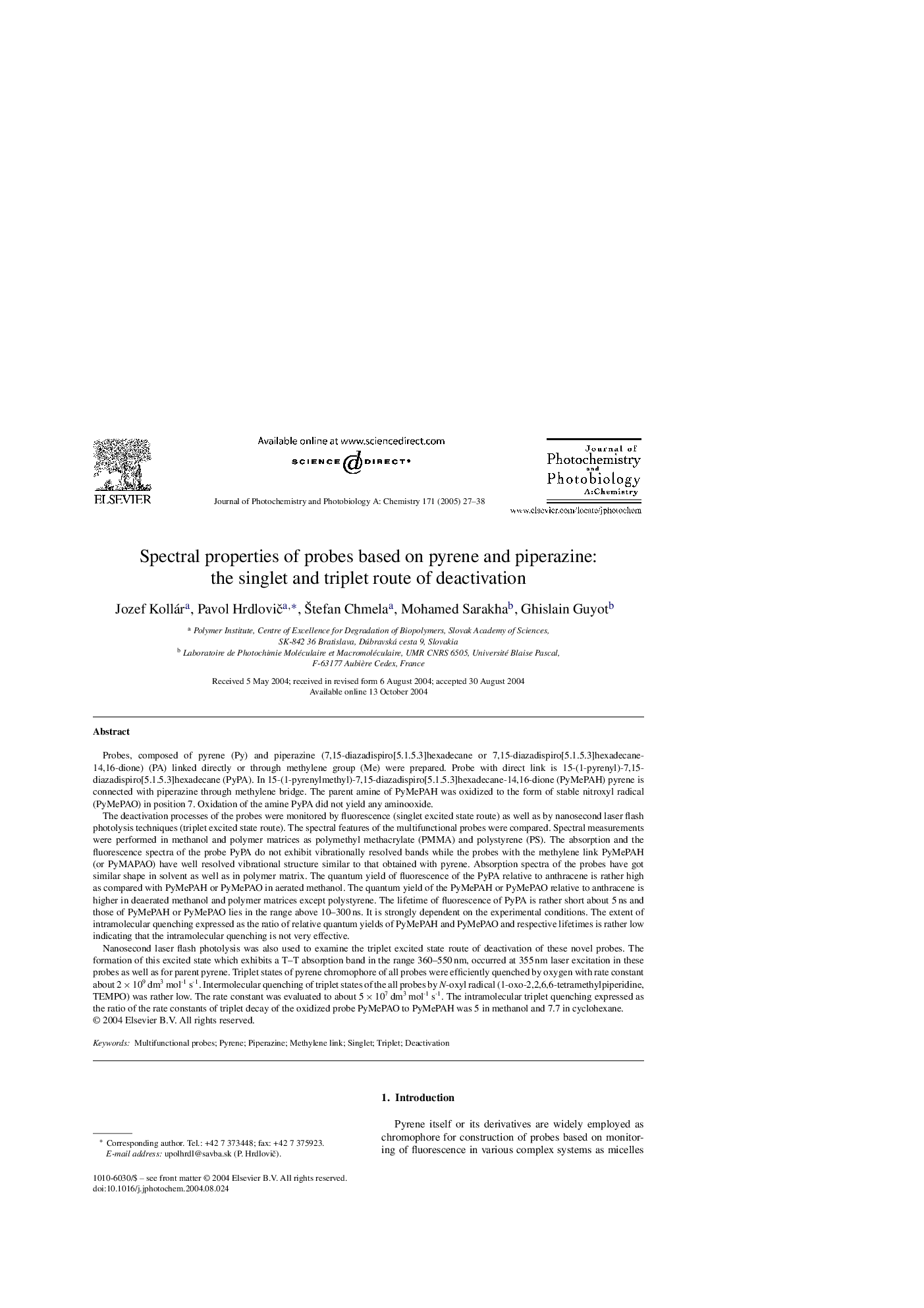| Article ID | Journal | Published Year | Pages | File Type |
|---|---|---|---|---|
| 9605688 | Journal of Photochemistry and Photobiology A: Chemistry | 2005 | 12 Pages |
Abstract
Nanosecond laser flash photolysis was also used to examine the triplet excited state route of deactivation of these novel probes. The formation of this excited state which exhibits a T-T absorption band in the range 360-550Â nm, occurred at 355Â nm laser excitation in these probes as well as for parent pyrene. Triplet states of pyrene chromophore of all probes were efficiently quenched by oxygen with rate constant about 2Â ÃÂ 109Â dm3Â molâ1Â sâ1. Intermolecular quenching of triplet states of the all probes by N-oxyl radical (1-oxo-2,2,6,6-tetramethylpiperidine, TEMPO) was rather low. The rate constant was evaluated to about 5Â ÃÂ 107Â dm3Â molâ1Â sâ1. The intramolecular triplet quenching expressed as the ratio of the rate constants of triplet decay of the oxidized probe PyMePAO to PyMePAH was 5 in methanol and 7.7 in cyclohexane.
Related Topics
Physical Sciences and Engineering
Chemical Engineering
Bioengineering
Authors
Jozef Kollár, Pavol HrdloviÄ, Å tefan Chmela, Mohamed Sarakha, Ghislain Guyot,
